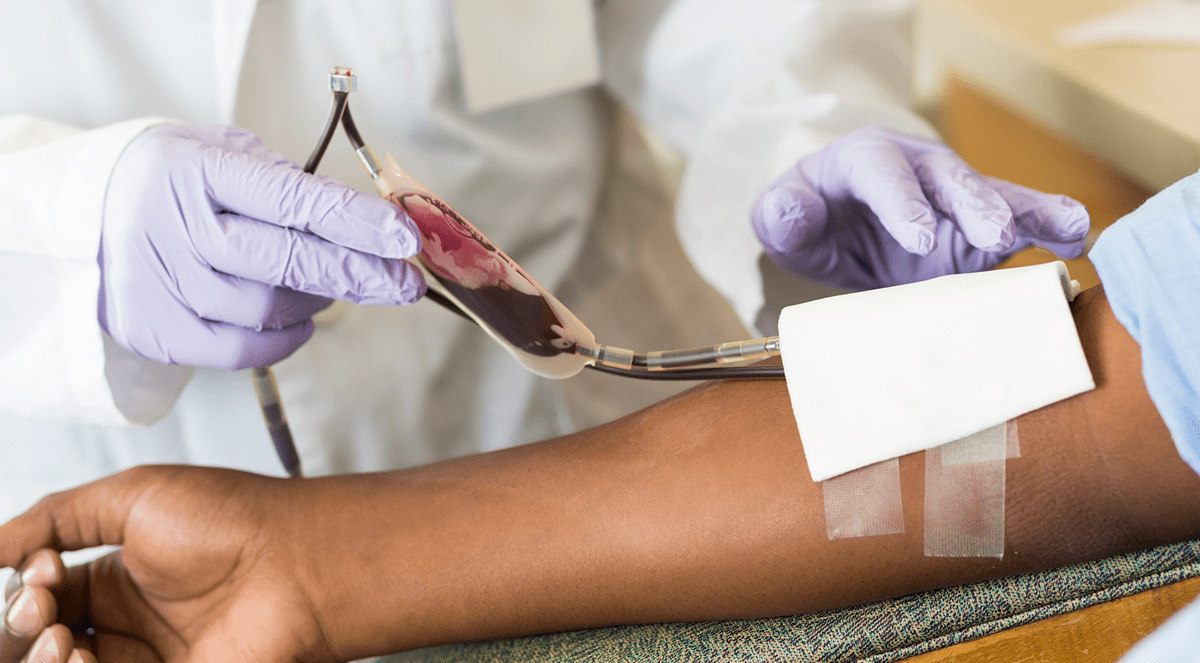As a further safety measure against the emerging Zika virus outbreak, today the U.S. Food and Drug Administration issued a revised guidance recommending universal testing of donated Whole Blood and blood components for Zika virus in the U.S. and its territories.
“There is still much uncertainty regarding the nature and extent of Zika virus transmission,” said Peter Marks, M.D., Ph.D., director of the FDA’s Center for Biologics Evaluation and Research. “At this time, the recommendation for testing the entire blood supply will help ensure that safe blood is available for all individuals who might need transfusion.”
The revised guidance of those issued in February recommends that all states and U.S. territories screen individual units of donated Whole Blood and blood components with a blood screening test authorized for use by the FDA under an investigational new drug (IND) application, or a licensed test when available. Alternatively, an FDA-approved pathogen-reduction device may be used for plasma and certain platelet products.
Recommendations
The following recommendations are intended to reduce the risk of ZIKV transmission by blood and blood components. The recommendations apply to the collection of all Whole Blood and blood components5in the United States and its territories. If, based upon the available scientific evidence, the risk of ZIKV transmission by blood and blood components significantly changes, FDA may update these recommendations as warranted. In making this determination, FDA will consider available epidemiologic and other scientific evidence.
A. Testing and Pathogen Reduction
We recommend the following:
1) Test all donations collected in the U.S. and its territories with an investigational individual donor nucleic acid test (ID-NAT) for ZIKV under an investigational new drug application (IND), or when available, a licensed test, or
2) Implement pathogen reduction technology for platelets and plasma using an FDA-approved pathogen reduction device as specified in the Instructions for Use of the device. If an FDA-approved pathogen reduction device becomes available for Whole Blood or red blood cells, you may implement pathogen reduction technology for such products rather than testing the donations as described in section IV.A.1.
Note: Use of investigational pathogen reduction under an investigational device exemption (IDE) may be permitted in situations where approved technologies are unavailable.
Because all donations will be tested using an investigational ID-NAT for ZIKV under an IND or when available, a licensed test, or pathogen-reduced using an FDA-approved pathogen reduction device, you may discontinue providing donor educational material with respect to ZIKV and screening donors for ZIKV risk factors, such as travel history, and deferring them as previously recommended in the February 2016 guidance. Under 21 CFR630.10(a), if a donor volunteers a recent history of ZIKV infection, you must not collect blood or blood components from that individual. We recommend that you defer such a donor for 120 days after a positive viral test or the resolution of symptoms, whichever timeframe is longer.
B. Donor and Product Management
1) You may release ID-NAT non-reactive donations provided all other donation suitability requirements are met (21 CFR 630.30).
2) If a donation tests ID-NAT reactive for ZIKV, you must not distribute or use the donation unless an exception exists (21 CFR 610.40(h))6.3.
3) You must defer a donor who tests ID-NAT reactive for ZIKV and notify the donor of the deferral (21 CFR 610.41 and 630.30). We recommend that you defer the donor for 120 days7from the date of the reactive test or after the resolution of ZIKV symptoms, whichever timeframe is longer. We recommend you counsel the donor regarding a possible ZIKV infection.
4) We recommend that you quarantine and retrieve in-date blood and blood components collected from a donor in the 120 days prior to the donation that is ID-NAT reactive. Additionally, if such blood components were transfused, we recommend that you advise the transfusion service to inform the transfusion recipient’s physician of record regarding the potential need for monitoring and counseling the recipient for a possible ZIKV infection.
C. Labeling of Whole Blood and Blood Components Intended for Transfusion
Under 21 CFR 606.122(h), the circular of information must include the names and results ofall tests performed when necessary for safe and effective use. When testing is performed, we recommend that you update your circular of information to include the non-reactive ID-NAT results for ZIKV. You should indicate whether the testing has been performed using an investigational or licensed test.
“As new scientific and epidemiological information regarding Zika virus has become available, it’s clear that additional precautionary measures are necessary,” said Luciana Borio, M.D., the FDA’s acting chief scientist. “We are issuing revised guidance for immediate implementation in order to help maintain the safety of the U.S. blood supply.”
The first local or non-travel related transmission of Zika virus in the U.S. by mosquitoes was reported from Puerto Rico in December 2015; and soon thereafter, local transmission was reported in American Samoa and the U.S. Virgin Islands. In July 2016, the first cases of local or non-travel related transmission of Zika virus in the continental U.S. were reported in Miami-Dade County, Florida.
In addition to protecting the nation’s blood supply, the FDA works to protect the safety of our nation’s supply of human cells, tissues, and cellular and tissue-based products; supports the development and availability of diagnostic tests that may be useful for identifying the presence of or prior exposure to the Zika virus; works with commercial and government developers to advance the development of investigational vaccines and therapeutics; and monitors for fraudulent products and false product claims related the Zika virus. The FDA, an agency within the U.S. Department of Health and Human Services, promotes and protects the public health by, among other things, assuring the safety, effectiveness, and security of human and veterinary drugs, vaccines and other biological products for human use, and medical devices. The agency also is responsible for the safety and security of our nation’s food supply, cosmetics, dietary supplements, products that give off electronic radiation, and for regulating tobacco products.


